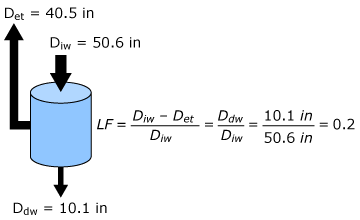- Home
- Learn about salinity
- Get to know your site
- Design a landscape
- Solve a problem
- Other information
Salinity Management Guide
What factors determine the degree to which salt accumulates in irrigated soil?
Leaching fraction: the portion of irrigation water that infiltrates past the root zone
The leaching fraction (LF) is defined as the ratio of the quantity of water draining past the root zone to that infiltrated into the soil's surface.
Note: When discussing infiltration and estimating LF, it is helpful to express water infiltration rates in terms of a surface depth of water — in other words, as a volume of water per unit surface area. For example, if 4 acre-inches of water is applied to a surface area of 1 acre, the surface depth of applied water is 4 acre-inches per acre, or, simply, 4 inches.
A sample calculation

Figure 5. Example demonstrating how to calculate LF and depicting the relationship between irrigation, ET, and root zone drainage
Typically, for a cool season turfgrass, such as Kentucky bluegrass, about 50.6 inches of water must be applied annually to keep the turf healthy. This turfgrass annually consumes about 40.5 inches of water to satisfy its ET requirement. The difference between irrigation and ET — in this case, 50.6 minus 40.5, or 10.1 inches — is the annual depth of water that drains past the root zone. The LF for this example is the ratio of 10.1 inches drainage to 50.6 inches irrigation, or 0.2. Stated another way, 20% of the applied water is not absorbed by plants and instead drains downward, out of the root zone. Figure 5 illustrates this calculation of LF.
| « Previous page | Next page » |